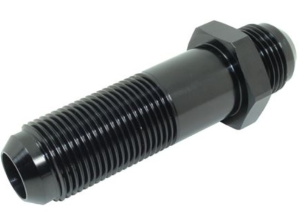Extra long bulkhead fittings are specialized components used to create a secure and leak-proof connection between pipelines or conduits. They feature an extended length compared to standard fittings, providing greater reach and flexibility in various industrial applications.
Understanding the Design and Structure
A. Length Specifications
Extra long bulkhead fittings, as the name suggests, are characterized by their extended length, allowing for connections over longer distances. This design ensures adaptability to various setups, enhancing their applicability.
B. Material Composition
The fittings are commonly manufactured from materials such as stainless steel, brass, or other durable alloys. These materials provide the necessary strength and corrosion resistance required for the demanding industrial environments.
C. Thread Variations
These fittings come in various thread types and sizes, catering to the specific needs of different applications. The threads are meticulously designed to achieve a secure and leak-free connection in various industrial contexts.
Applications and Industries
A. Oil and Gas Sector
In the oil and gas industry, extra long bulkhead fittings find extensive use in connecting pipelines across vast distances. Their ability to maintain a secure connection over such distances is critical for efficient operations.
B. Chemical Industry
The chemical sector employs these fittings to connect pipelines carrying diverse chemicals. The extended length ensures safe and reliable connections in environments where chemical compatibility and leak-free performance are paramount.
C. Marine Engineering
Marine engineering extensively utilizes extra long bulkhead fittings due to the need for long-distance connections in ships and offshore platforms. Their corrosion-resistant properties are vital for marine applications.
Advantages of Extra Long Bulkhead Fittings
A. Enhanced Versatility
The extended length provides versatility, allowing these fittings to bridge longer gaps between pipelines, providing more flexibility in system design and layout.
B. Optimal Fluid Flow
The design of these fittings promotes smooth fluid flow, minimizing turbulence and pressure drops, thereby optimizing the performance of the entire system.
C. Improved Sealing Capabilities
The extended length of the fitting enhances the sealing capabilities, reducing the risk of leaks and ensuring a secure and safe fluid or gas transfer.
Considerations for Proper Installation
A. Positioning and Alignment
Proper positioning and alignment of the fittings are crucial for their effective performance. Misalignment can lead to leakage and compromise system integrity.
B. Tightening and Torque Specifications
Adhering to specified tightening and torque values during installation is essential to maintain the structural integrity of the fittings and prevent potential leakages.
C. Compatibility with Existing Systems
Compatibility with existing systems should be ensured to seamlessly integrate the extra long bulkhead fittings without causing disruptions or inefficiencies.
Troubleshooting and Maintenance
A. Leakage Issues
Regular checks for leakages and addressing them promptly are vital for preventing downtime and maintaining the reliability of the overall system.
B. Corrosion and Wear
Regular inspection for signs of corrosion or wear is necessary, especially in demanding environments, to replace fittings when needed and prevent potential failures.
C. Regular Inspection and Replacement
Scheduled maintenance and inspections should be carried out to identify any signs of wear or damage, allowing for timely replacements and ensuring consistent system performance.
Conclusion
Extra Long Bulkhead Fittings stand as indispensable components in various industries, offering unmatched reliability and performance. Their exceptional durability, precision engineering, and ease of installation make them a preferred choice for professionals seeking top-tier solutions.
Post time: Nov-15-2023


